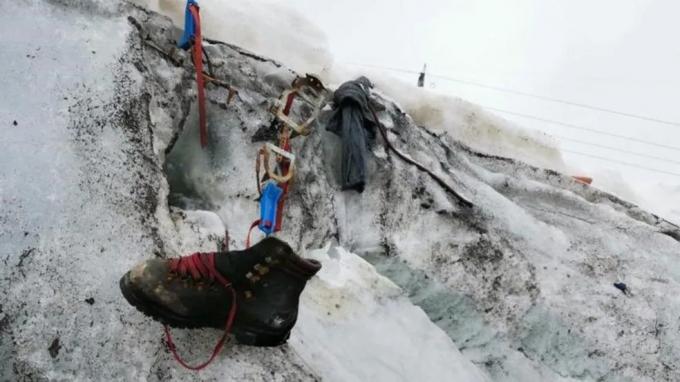
Human remains that were found on a mountain in Switzerland belong to a German climber who disappeared in 1986. The body was found on July 12 by a group of climbers on the Theodul glacier in the Matterhorn region of Switzerland.
The case drew attention because it solved a disappearance that happened in the 1980s. At the time, numerous searches were carried out in a rescue operation. But authorities were unable to find any traces of the climber in the glacier region.
see more
Vivo is the best fixed internet operator in Brazil in 2023, points out…
C&A and Magalu also join Desenrola Brasil; know more
Likewise, the discovery also points to the significant melting of glaciers under current climatic conditions. The site has been suffering environmental impacts that could affect the whole of Europe.
Even the discovery of the body of the climber it is a result of the current climatic conditions that caused the retreat of the Theodul Glacier in the last decade.
Local police said the climbers found human remains, a boot and climbing equipment. Thus, a DNA analysis was performed to assist in the recognition of the body found.
The result pointed out that they were the remains of a German mountaineer who was last seen in 1986. Wanted for over 35 years, the man was 38 when he was reported missing.
Authorities did not reveal his identity but said he disappeared after going for a walk.
In addition to the impressive case resolution, high temperatures and glacial melting are bringing up the remains of other missing people.
In 2014, another body was also found by a helicopter that circled the site. After identification, it was discovered that the remains were those of Jonathan Conville, a British climber missing since 1979.

(Image: Swiss Police – Via BBC/Playback)
The discovery of the bodies of the missing climbers is significant in several ways. First, by resolving a disappearance after more than three decades.
On the other hand, we have a worrying warning about the climate crisis that impacts glacial environments. After all, the spaces used for exploration and mountaineering also represent important natural resources, such as water for agriculture and for the rivers of nearby countries, such as Italy.
In 2022, Switzerland and Italy saw the location of their borders change. According to the records, the boundary line was at the drainage division. However, the location was modified in the melting process that is increasingly accentuated in the European summer.
To resolve the border situation, the two countries are already in negotiations, to avoid a diplomatic conflict.
Finally, glacier experts believe that the mountains have already lost half their volume since 1931, due to retreating ice.
In 2023, Switzerland is facing one of its worst summers ever, and researchers are conducting climate measurements on ice in the region to try to record the environmental impacts of melting glaciers in the region. Europe.
